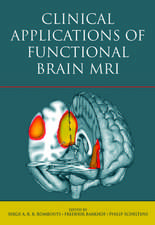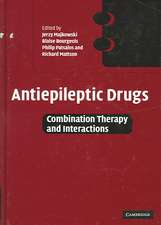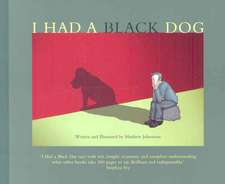Spinal Cord Injury: Handbook of Clinical Neurology, cartea 109
Editat de Joost Verhaagen, John W. McDonalden Limba Engleză Hardback – 26 noi 2012
Organized in five sections, the book begins with an overview of the development, maturation, biomechanics, and anatomy of the spinal cord before proceeding with a discussion of clinical diagnosis and prognosis as well as natural recovery, ambulation, and function following spinal cord injury. It then examines clinical neurophysiology in the prognosis and monitoring of traumatic spinal cord injury; medical, surgical and rehabilitative management of spinal cord trauma; and some new approaches for improving recovery in patients, including restoration of function by electrical stimulation, locomotor training, and the use of robotics. Other chapters cover cell transplantation, artificial scaffolds, experimental pharmacological interventions, and molecular and combinatorial strategies for repairing the injured spinal cord. This volume should be of interest to neuroscience and clinical neurology research specialists and practicing neurologists.
- Comprehensive coverage of the latest scientific understanding of spinal cord injuries
- Detailed coverage of current treatment best practices and potential future treatments
- Connects leading edge research programs to future treatment opportunities
Din seria Handbook of Clinical Neurology
- 20%
 Preț: 1274.52 lei
Preț: 1274.52 lei - 20%
 Preț: 1311.43 lei
Preț: 1311.43 lei - 23%
 Preț: 1286.74 lei
Preț: 1286.74 lei - 20%
 Preț: 1344.20 lei
Preț: 1344.20 lei - 20%
 Preț: 1349.51 lei
Preț: 1349.51 lei - 24%
 Preț: 1275.78 lei
Preț: 1275.78 lei - 20%
 Preț: 1344.02 lei
Preț: 1344.02 lei - 20%
 Preț: 1339.70 lei
Preț: 1339.70 lei - 20%
 Preț: 1316.98 lei
Preț: 1316.98 lei - 20%
 Preț: 1315.38 lei
Preț: 1315.38 lei - 20%
 Preț: 1329.13 lei
Preț: 1329.13 lei - 20%
 Preț: 1313.06 lei
Preț: 1313.06 lei - 5%
 Preț: 1309.43 lei
Preț: 1309.43 lei - 5%
 Preț: 1300.74 lei
Preț: 1300.74 lei - 20%
 Preț: 1302.98 lei
Preț: 1302.98 lei - 20%
 Preț: 1304.03 lei
Preț: 1304.03 lei - 20%
 Preț: 1304.66 lei
Preț: 1304.66 lei - 20%
 Preț: 1303.13 lei
Preț: 1303.13 lei - 20%
 Preț: 1319.00 lei
Preț: 1319.00 lei - 20%
 Preț: 1312.90 lei
Preț: 1312.90 lei - 5%
 Preț: 1304.05 lei
Preț: 1304.05 lei - 5%
 Preț: 1305.77 lei
Preț: 1305.77 lei - 20%
 Preț: 1303.05 lei
Preț: 1303.05 lei - 20%
 Preț: 1312.24 lei
Preț: 1312.24 lei - 20%
 Preț: 1304.66 lei
Preț: 1304.66 lei - 20%
 Preț: 1300.34 lei
Preț: 1300.34 lei - 20%
 Preț: 1148.33 lei
Preț: 1148.33 lei - 5%
 Preț: 1221.37 lei
Preț: 1221.37 lei - 25%
 Preț: 1256.05 lei
Preț: 1256.05 lei - 5%
 Preț: 1203.24 lei
Preț: 1203.24 lei - 21%
 Preț: 1062.72 lei
Preț: 1062.72 lei - 23%
 Preț: 1126.07 lei
Preț: 1126.07 lei - 19%
 Preț: 1070.63 lei
Preț: 1070.63 lei - 20%
 Preț: 1069.47 lei
Preț: 1069.47 lei - 5%
 Preț: 1187.28 lei
Preț: 1187.28 lei - 25%
 Preț: 1165.32 lei
Preț: 1165.32 lei - 19%
 Preț: 1180.73 lei
Preț: 1180.73 lei - 25%
 Preț: 1165.86 lei
Preț: 1165.86 lei - 19%
 Preț: 1178.74 lei
Preț: 1178.74 lei - 25%
 Preț: 1175.31 lei
Preț: 1175.31 lei - 5%
 Preț: 1343.67 lei
Preț: 1343.67 lei - 5%
 Preț: 1338.90 lei
Preț: 1338.90 lei - 5%
 Preț: 1175.59 lei
Preț: 1175.59 lei - 5%
 Preț: 1165.40 lei
Preț: 1165.40 lei - 20%
 Preț: 1225.89 lei
Preț: 1225.89 lei - 24%
 Preț: 1165.66 lei
Preț: 1165.66 lei - 25%
 Preț: 1226.82 lei
Preț: 1226.82 lei
Preț: 1178.93 lei
Preț vechi: 1564.59 lei
-25% Nou
Puncte Express: 1768
Preț estimativ în valută:
225.66€ • 245.20$ • 189.68£
225.66€ • 245.20$ • 189.68£
Carte tipărită la comandă
Livrare economică 14-28 aprilie
Preluare comenzi: 021 569.72.76
Specificații
ISBN-13: 9780444521378
ISBN-10: 0444521372
Pagini: 656
Dimensiuni: 195 x 260 x 38 mm
Greutate: 2.09 kg
Editura: ELSEVIER SCIENCE
Seria Handbook of Clinical Neurology
ISBN-10: 0444521372
Pagini: 656
Dimensiuni: 195 x 260 x 38 mm
Greutate: 2.09 kg
Editura: ELSEVIER SCIENCE
Seria Handbook of Clinical Neurology
Public țintă
Neuroscience and Clinical Neurology research specialists and practicing neurologists.Cuprins
SECTION 1 Developmental and Anatomical Perspectives
1. Development and maturation of the spinal cord: implications of molecular and genetic defects; 2. Anatomy and biomechanics of the spinal column and cord
SECTION 2 Diagnosis and Prognosis
3. Clinical diagnosis and prognosis following spinal cord injury; 4. Clinical neurophysiology in the prognosis and monitoring of traumatic spinal cord injury; 5. Concepts of aging with paralysis: implications for recovery and treatment; 6. Advanced MRI strategies for assessing spinal cord injury
SECTION 3 Acute Spinal Cord Injury: Medical, Surgical and Rehabilitative Management
7. Advances in the management of spinal cord and spinal column injuries; 8. Spinal cord injuries in children and adolescents; 9. The changing landscape of spinal cord injury; 10. Surgical treatments to restore function control in spinal cord injury; 11. Advances in the rehabilitation management of acute spinal cord injury; 12. Spasticity; 13. Disordered cardiovascular control after spinal cord injury; 14. New concepts in the prevention of pressure sores; 15. Functional electrical stimulation for bladder, bowel and sexual function; 16. Evidence based therapy for recovery of function after spinal cord injury; 17. Functional electrical stimulation: restoration of respiratory function; 18. Spinal cord stimulation: therapeutic benefits and movement generation after spinal cord Injury; 19. Promoting optimal functioning in spinal cord injury: the role of rehabilitation psychology
SECTION 4 Chronic Spinal Cord Injury – The Changing Perspective of Neurorestorative Rehabilitation, Activity-Based and Surgical Restoration Therapies
20. The changing field of rehabilitation: optimizing spontaneous regeneration and functional recovery; 21. The longitudinal spinal cord injury: lessons from intra spinal plexus, cauda equina and medullary conus lesions; 22. Post-traumatic syringomyelia; 23. Post-traumatic deformity: prevention and management
SECTION 5 Preclinical Research - Bridging the Gap Between Bench and Bedside
24. Spinal cord injury clinical trials: translational process, review of past and proposed acute trials with reference to recommended trial guidelines; 25. Translating preclinical approaches into human application; 26. Translational spinal cord injury research: preclinical guidelines and challenges; 27. Brain-machine interfaces and transcranial stimulation: future implications for directing functional movement and improving function after spinal injury in humans; 28. Approaches to repairing the damaged spinal cord: overview; 29. Limiting spinal cord injury by pharmacological intervention; 30. Harmful and beneficial effects of inflammation after spinal cord injury: potential therapeutic implications; 31. Defeating inhibition of regeneration by scar and myelin components; 32. Realising the maximum potential of Schwann cells to promote recovery from spinal cord injury; 33. Repair of CNS lesions by transplantation of olfactory ensheathing cells; 34. Cell transplantation: stem cells and precursor cells; 35. Gene therapy, neurotrophic factors and spinal cord regeneration; 36. Scaffolds to promote spinal cord regeneration; 37. Molecular target discovery for neural repair in the functional genomics era; 38. Combination therapies
1. Development and maturation of the spinal cord: implications of molecular and genetic defects; 2. Anatomy and biomechanics of the spinal column and cord
SECTION 2 Diagnosis and Prognosis
3. Clinical diagnosis and prognosis following spinal cord injury; 4. Clinical neurophysiology in the prognosis and monitoring of traumatic spinal cord injury; 5. Concepts of aging with paralysis: implications for recovery and treatment; 6. Advanced MRI strategies for assessing spinal cord injury
SECTION 3 Acute Spinal Cord Injury: Medical, Surgical and Rehabilitative Management
7. Advances in the management of spinal cord and spinal column injuries; 8. Spinal cord injuries in children and adolescents; 9. The changing landscape of spinal cord injury; 10. Surgical treatments to restore function control in spinal cord injury; 11. Advances in the rehabilitation management of acute spinal cord injury; 12. Spasticity; 13. Disordered cardiovascular control after spinal cord injury; 14. New concepts in the prevention of pressure sores; 15. Functional electrical stimulation for bladder, bowel and sexual function; 16. Evidence based therapy for recovery of function after spinal cord injury; 17. Functional electrical stimulation: restoration of respiratory function; 18. Spinal cord stimulation: therapeutic benefits and movement generation after spinal cord Injury; 19. Promoting optimal functioning in spinal cord injury: the role of rehabilitation psychology
SECTION 4 Chronic Spinal Cord Injury – The Changing Perspective of Neurorestorative Rehabilitation, Activity-Based and Surgical Restoration Therapies
20. The changing field of rehabilitation: optimizing spontaneous regeneration and functional recovery; 21. The longitudinal spinal cord injury: lessons from intra spinal plexus, cauda equina and medullary conus lesions; 22. Post-traumatic syringomyelia; 23. Post-traumatic deformity: prevention and management
SECTION 5 Preclinical Research - Bridging the Gap Between Bench and Bedside
24. Spinal cord injury clinical trials: translational process, review of past and proposed acute trials with reference to recommended trial guidelines; 25. Translating preclinical approaches into human application; 26. Translational spinal cord injury research: preclinical guidelines and challenges; 27. Brain-machine interfaces and transcranial stimulation: future implications for directing functional movement and improving function after spinal injury in humans; 28. Approaches to repairing the damaged spinal cord: overview; 29. Limiting spinal cord injury by pharmacological intervention; 30. Harmful and beneficial effects of inflammation after spinal cord injury: potential therapeutic implications; 31. Defeating inhibition of regeneration by scar and myelin components; 32. Realising the maximum potential of Schwann cells to promote recovery from spinal cord injury; 33. Repair of CNS lesions by transplantation of olfactory ensheathing cells; 34. Cell transplantation: stem cells and precursor cells; 35. Gene therapy, neurotrophic factors and spinal cord regeneration; 36. Scaffolds to promote spinal cord regeneration; 37. Molecular target discovery for neural repair in the functional genomics era; 38. Combination therapies
Recenzii
"Providing the latest information on all aspects of spinal cord injury, this volume supplants a 1992 work published in the Handbook of Clinical Neurology series titled Spinal Cord Trauma. Bridging the gap between bench and bedside, coverage encompasses diagnosis and prognosis; medical, surgical, and rehabilitative management of acute spinal cord injury; therapies for chronic spinal cord injury; and preclinical research." --Reference and Research Book News, October 2013






